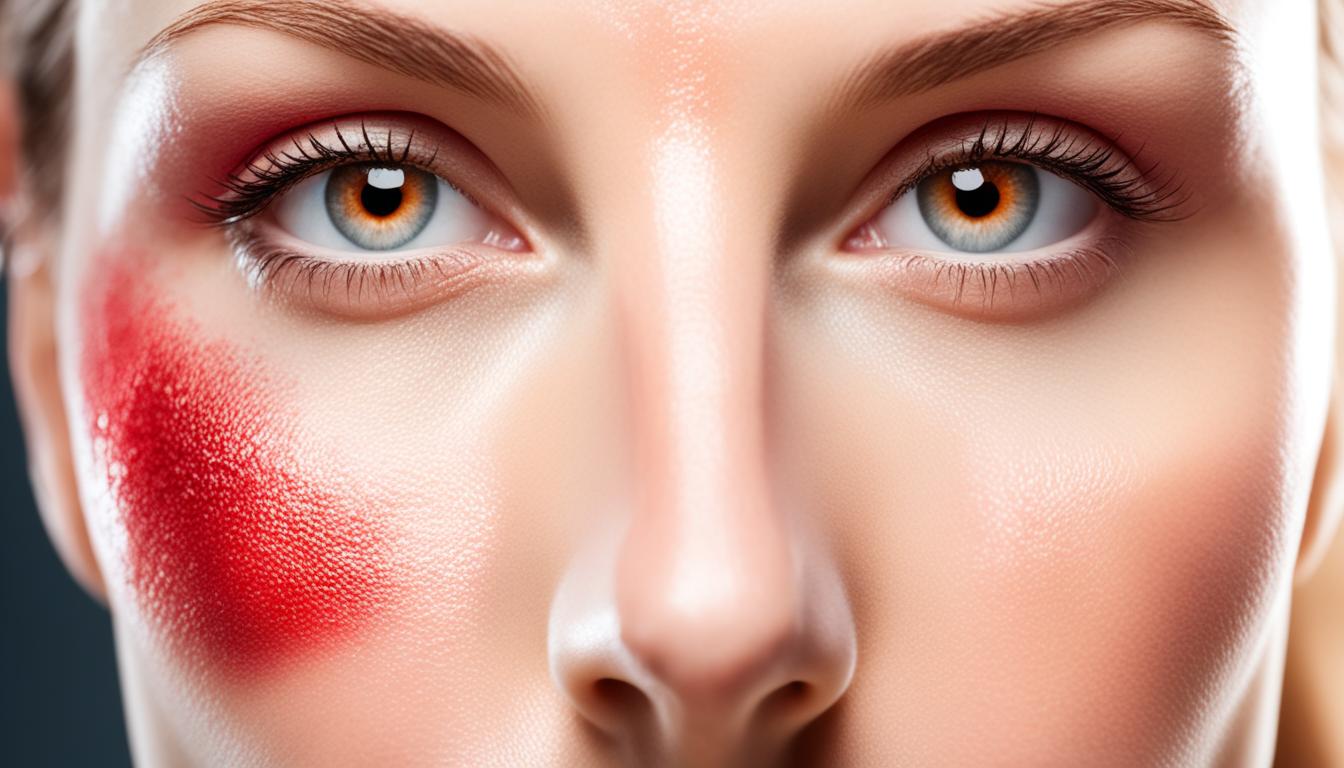Actinic keratosis, or AK, is a skin condition that could turn into cancer. It shows up as rough, scaly patches on the skin. These spots often appear on parts of the body that get a lot of sun. This includes the face, ears, neck, lips, forearms, and the back of the hands.
The risk of AK goes up after forty. People with light skin, red or blonde hair, and blue or green eyes are more likely to get it. Spending lots of time in the sun also increases your chances.
Key Takeaways:
- Actinic keratosis is a precancerous skin condition characterized by rough, scaly lesions.
- Excessive sun exposure is a significant factor in the development of actinic keratosis.
- Individuals over the age of forty are more commonly affected.
- Factors such as light complexion, red or blonde hair, and blue or green eyes contribute to a higher risk.
- Outdoor enthusiasts are more susceptible to developing actinic keratosis.
Signs and Symptoms of Actinic Keratosis
Actinic keratosis shows many signs and symptoms. Knowing these can help with early treatment. This can avoid more serious problems down the road.
One major sign is the skin lesions. These appear as scaly patches on the skin. They can be rough and come in different colors like red, pink, or skin-colored. These patches help set actinic keratosis apart from other skin issues.
People with actinic keratosis might feel sore in the affected areas. They can also be sensitive and look inflamed. Inflammation, like redness and swelling, happens because the body fights the condition.
In bad cases, the lesions might bleed or grow thick skin that won’t heal. If this happens, seeing a dermatologist is crucial. Actinic keratosis is not usually painful. But some feel mild discomfort like itching or burning.
Diagnosis and Treatment of Actinic Keratosis
Diagnosing actinic keratosis starts with a close look at the skin. A dermatologist checks for specific signs. They may also do a biopsy if needed for a clear diagnosis.
A biopsy means taking a small piece of the skin for testing. This test helps the doctor confirm if it’s actinic keratosis. It guides them in planning the best treatment.
The treatment for actinic keratosis depends on how severe it is. One option is cryotherapy. This method uses cold to remove the affected areas.
Another choice might be special creams or gels. These are applied to the skin. They help your skin get rid of the bad cells. They are easy to use and can be applied at home under a dermatologist’s advice.
Seeing a dermatologist is key for the right diagnosis and treatment. They can figure out the best steps for you. They also help manage your care over time.
Benefits of early diagnosis and treatment
Getting actinic keratosis treated early is important. It stops it from turning into skin cancer. Plus, it can make your skin look and feel better again.
Early treatment might also stop the skin from feeling or looking weird. This can help you feel better in general. The right care improves your skin health.
It’s vital to see a dermatologist for actinic keratosis care. They know how to diagnose and treat it. They also help you prevent future issues and keep your skin safe.
Advancements in Stem Cell Therapy for Actinic Keratosis
Stem cell therapy is changing how we fight actinic keratosis. It uses the power of stem cells to heal the skin. This new approach shows big promise in repairing the damage caused by this skin issue.
This method allows doctors to grow new, healthy skin. It replaces the skin damaged by actinic keratosis. This is a major step forward in treatment and care for patients.
Research and trials are helping us learn more about using stem cells. They offer hope for new and better treatments down the line. We might soon see stem cell therapy as a common part of dermatological care.

